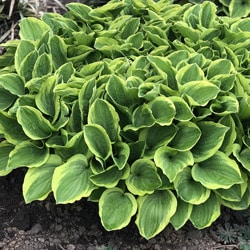How to Improve Clay Soil
Clay soil can be one of the most challenging soil types for gardeners and landscapers to work with. It is not impossible, however, to turn a clay-based plot into a lush, productive growing space. Understanding your clay soil and knowing how to improve it can help you make the most of even the densest, heaviest clay.
About Clay Soil
Clay soils are very dense and composed of extremely fine mineral particles. These soils are typically lacking in organic material but do have rich mineral components, often with plentiful calcium, potassium, and magnesium, and they’re often tinted with a reddish color. When tested, clay soil is typically alkaline on the pH scale.
Clay soil holds water very well and can be considered poor draining. This soil can be very sticky and forms large clumps, often sticking to shoes and garden tools. When it dries out, however, clay soil will crust and form large cracks. This type of texture can be very difficult to dig and clay is easily compacted, which can contribute to smothering roots and spreading root rot.
To check if you have clay soil, squeeze a clump of dirt and see how well it sticks together. If it has a smooth texture and sticks together well, or can be rolled into a sausage shape or flattened into a ribbon without completely cracking apart, the soil has a very high clay content.
Improving Your Clay Soil
Even the heaviest clay soil can be made friendlier for planting. The key to enriching clay soil and making it better for all types of planting is to improve its texture and enhance its organic composition. To do so…
- Add 6-8 inches of organic material on top of the clay soil. if you have a farmer friend you could find some well-matured manure! It is easier to just use Bumper Crop compost, grass clippings, and even shredded leaves. You can even use a mixture of different materials for a more balanced mix of organic components. Mix that material into the top 6-12 inches of the clay soil to create a healthier, easier-to-work planting bed.
- Aerate a clay soil lawn annually and allow the removed soil plugs to break down naturally and add organic material back to the soil. Take care not to use very heavy aeration equipment, however, which can further compact the soil. If preferred, remove the soil plugs and add organic amendments after aeration instead. Very heavy clay soils can be aerated in both spring and fall.
- Consider using raised beds for planting, and adding more organic material to the beds before they are used. By raising the beds and sloping the sides, the drainage of clay soil can be improved to minimize the potential for rot.
- Add organic mulches around both new and established plantings, such as bark chips, shredded bark, grass clippings, or shredded leaves. These mulches will slowly decompose, adding more organic material where it is needed most, but they will need to be refreshed periodically.
- Raise and add earthworms to the clay soil. Healthy worms will burrow through the soil, improving its texture, and their castings are ideal organic material to enrich the soil and nourish plants. Or simply buy Earthworm Castings at Strader’s.
- Test your soil regularly to keep its pH balanced and adjust fertilizing options to provide the best nutrition for the plants you choose. The more you know about your soil, the better you will be equipped to keep it healthy and rich.
To improve your clay soil as much as possible, use multiple techniques to add organic material and improve its texture. While the soil can be improved, doing so is a long-term process and will require ongoing effort to keep your soil at its best.
Best Plants for Clay Soil
If you have clay soil, it is best to opt for plants that will thrive in its dense structure, high mineral content, and alkaline pH. Fortunately, many plants aren’t deterred by clay soil, and you can choose from a wide range of annuals, perennials, flowers, trees, shrubs, and even vegetables that will love your clay soil.
More Tips for Working with Clay Soil
Regardless of what plants you want to thrive in clay soil, there are ways you should care for the soil to be sure it stays in peak condition and is as workable as possible.
- Clay soil warms slowly in spring, so avoid planting very early when the soil will be too cool for plants to withstand any transplant shock.
- Dig in clay soil when it is relatively dry, and break up the bottom and sides of planting holes to give roots an easier foothold as they grow.
- Use stepping stones and dedicated pathways to avoid a lot of walking or other activity on clay soil, which could increase its compaction.
- Be gentle with watering and fertilization, as clay soil cannot absorb as quickly. Too much watering or overfertilization can contribute to runoff and waste.
Clay soil is a common problem in many gardens and landscapes, but it doesn’t have to be a problem for you if you understand its special nature and know best how to improve clay and work with it appropriately. With care, you can love your clay soil and appreciate how very nourishing it can be.

















